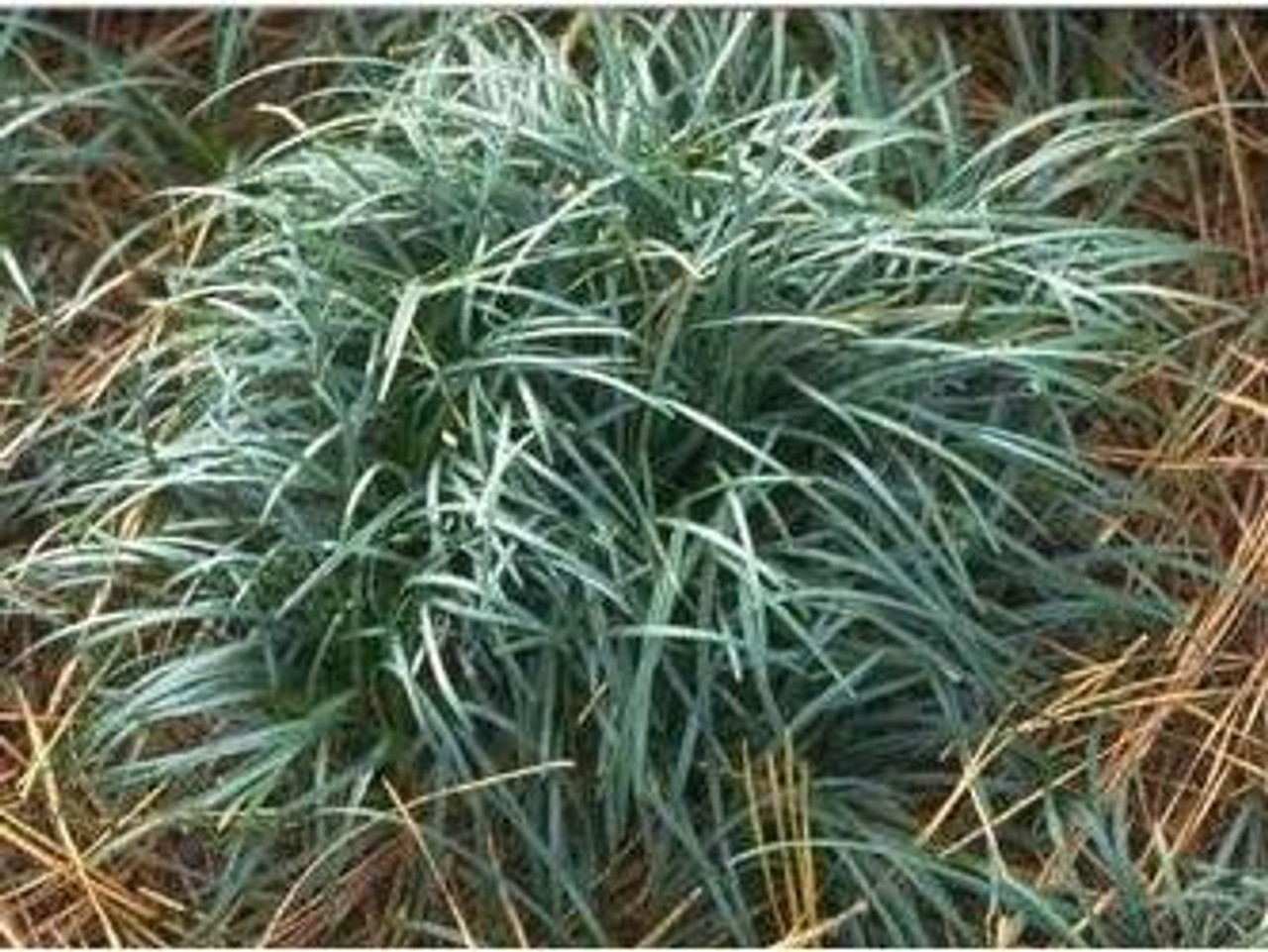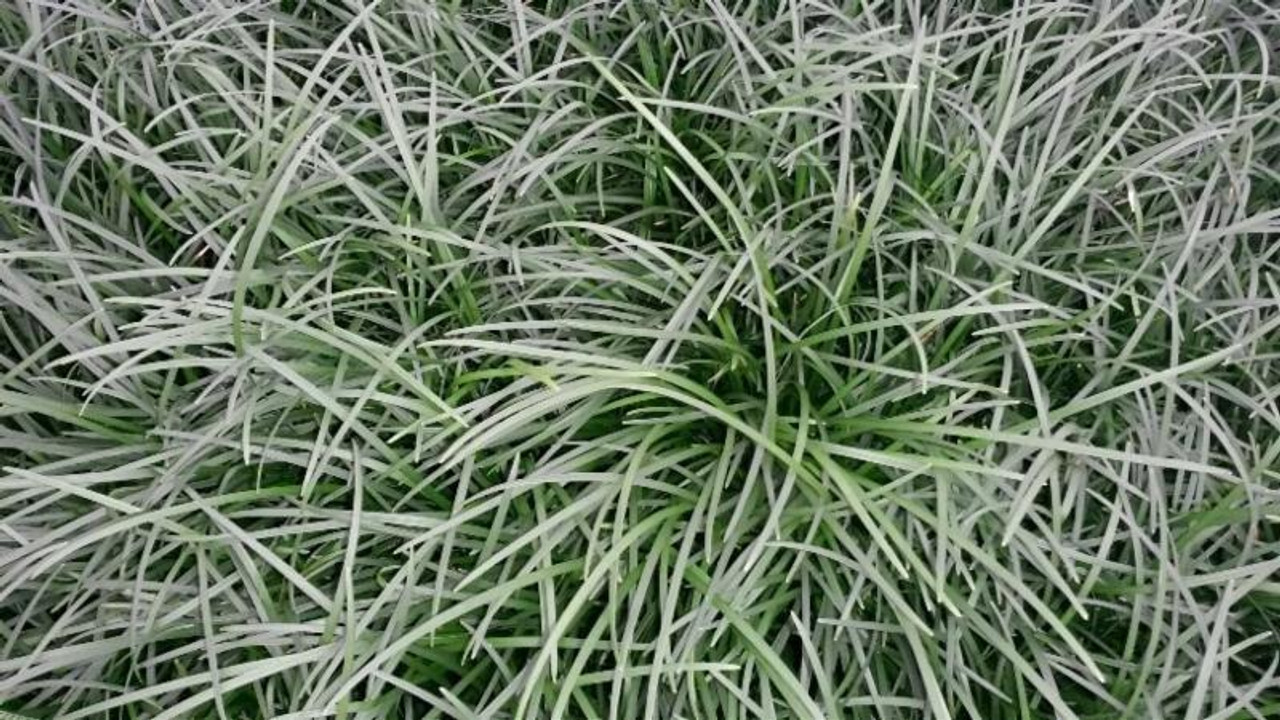Product Description
Ophiopogon japonicus Bare Root Plants
Mondo Grass, monkey grass
- Height: 6-8 Inches
- Hardiness Zone: 6-10
- Full Sun to Shade (Part Shade to Shade - Zones 7-10)
- Evergreen
- Spreads quickly
Ophiopogon japonicus, commonly known as mondo grass, is a low-growing, evergreen perennial plant that is native to Asia. It is a member of the lily family (Liliaceae) and is closely related to the hosta.
Mondo grass has narrow, grass-like 1/8" wide leaf blades that are dark green in color. The leaves are arranged in a fan-like pattern and can grow up to 12 inches long. The flowers are small and white or lilac-colored and appear in summer.
Mondo grass prefers full sun to partial shade and moist, well-drained soil. It is hardy in USDA zones 5-9. The plant is not particularly drought-tolerant, so it is important to water it regularly during the summer months.
Mondo grass is a popular choice for groundcover, as it can tolerate foot traffic and is relatively easy to care for. It is also a good choice for rock gardens, borders, and containers. Perfect for erosion control on banks, slopes and contained large bed plantings. Ophiopogon japonicus spreads rapidly by underground stolons, it can be invasive in some areas.
The name "mondo grass" is derived from the Japanese word "mondo," which means "dragon's beard." The plant is sometimes called "monkey grass" because the leaves resemble the tail of a monkey.
Create a Lush, Low-Maintenance Groundcover with Mondo Grass!
Ophiopogon japonicus, commonly known as Mondo Grass or Dwarf Lilyturf, is a popular evergreen groundcover prized for its fine, grass-like texture and rich, dark green foliage. This tough and adaptable plant thrives in shade to partial shade, making it an excellent choice for areas where traditional lawns struggle.
Mondo Grass forms dense, tufted clumps of narrow, linear leaves that resemble a miniature bamboo or fine-bladed grass. Its dark green foliage creates a lush, carpet-like groundcover that adds texture and depth to shady gardens. In summer, it produces small, bell-shaped, pale lilac flowers that are often hidden amongst the foliage. These are followed by small, blue-black berries that add a touch of visual interest. Mondo Grass is a slow-growing but reliable groundcover that requires minimal maintenance once established.
- Mature Size: 8-12 inches tall, spreading slowly to form a dense mat
- Foliage Color: Dark green
- Flower Color: Pale lilac (often inconspicuous)
- Bloom Time: Summer
- Growth Habit: Clumping, spreading slowly by rhizomes
- Light Needs: Part shade to full shade (tolerates some sun in cooler climates)
- Soil Needs: Adaptable to various soil types, prefers moist, well-drained soil
- Hardiness Zones: 6-11 (USDA)
- Special Features: Evergreen, fine texture, shade tolerant, drought tolerant once established, low maintenance
Planting:
- Timing: Plant in spring or fall for best results.
- Location: Choose a shady or partially shaded location. Mondo Grass thrives in areas that receive less than 6 hours of direct sunlight per day.
- Soil Preparation: While adaptable to various soil types, amending the soil with compost or other organic matter will improve drainage and fertility, promoting healthier growth.
- Spacing: Space plants 6-12 inches apart to create a dense groundcover. Closer spacing will result in faster coverage.
- Planting Depth: Plant at the same depth as the nursery container.
- Watering: Water thoroughly after planting and regularly until it is established.
Care:
- Watering: Once established, Mondo Grass is relatively drought-tolerant, but it benefits from consistent moisture, especially during hot, dry periods. Water deeply but infrequently.
- Fertilizing: Fertilize in spring with a balanced fertilizer to promote vigorous growth. Avoid over-fertilizing.
- Pruning: Minimal pruning is required. You can trim back any dead or damaged foliage in late winter or early spring.
- Mulching: Apply a layer of mulch around the plants to retain moisture, suppress weeds, and protect the shallow roots.
- Pest and Disease Control: Mondo Grass is generally pest and disease resistant. However, watch for occasional issues like slugs or snails.
Uses in the Garden:
- Groundcover: Ideal for creating a low-maintenance, shade-tolerant groundcover in areas where traditional lawns struggle.
- Borders and Edging: Adds a neat and tidy border along pathways, flower beds, or driveways.
- Rock Gardens: Thrives in the well-drained conditions of rock gardens.
- Containers: Can be grown in containers, adding a touch of green to patios and balconies.
- Mass Plantings: Plant in groups for a lush, textured groundcover effect.
- Japanese Gardens: A classic element in Japanese gardens, adding to the serene and minimalist aesthetic.
Create a beautiful and low-maintenance groundcover with the versatile Ophiopogon japonicus!
Other Details
The most important part of the plant is its root system. Healthy roots are the foundation of a healthy, vibrant plant. The type of plug container used is based on the specific needs of the plants. Perennials offered as bare root traditionally perform better when planted as bare root.Planted in a specialized mix, potted plants have well established root systems. Top growth stage will vary depending on the current life cycle and time of year when shipped. In Winter and early Spring dormant plants may be shipped. Dormant plants may be planted right away, even before the last frost date.
Most bare root varieties are field grown for at least one season, though Hemerocallis and Hosta are grown for two seasons. The bulk of the soil is removed during the harvesting process and the tops of most varieties are trimmed back to the crown. They are graded, packed in shredded aspen or sphagnum moss and stored in freezers until ready to be shipped.
See our Container Sizes and Bare Root Perennials pages for more information.
Plant information and care is provided in the Overview section, Plant Genus Page and general information is provided in the Planting Care & Guides. Additional questions can be asked on each Plant page.
Plant Spacing: Using the maximum mature spread or width of a plant to guide spacing, ensures space to grow to full size. To fill an area sooner, plant them closer together. Just remember, future thinning or transplanting may be needed.
Water: Keep a close eye on newly planted perennials, especially throughout the first growing year. Most early plant loss is due to too much or too little water!












